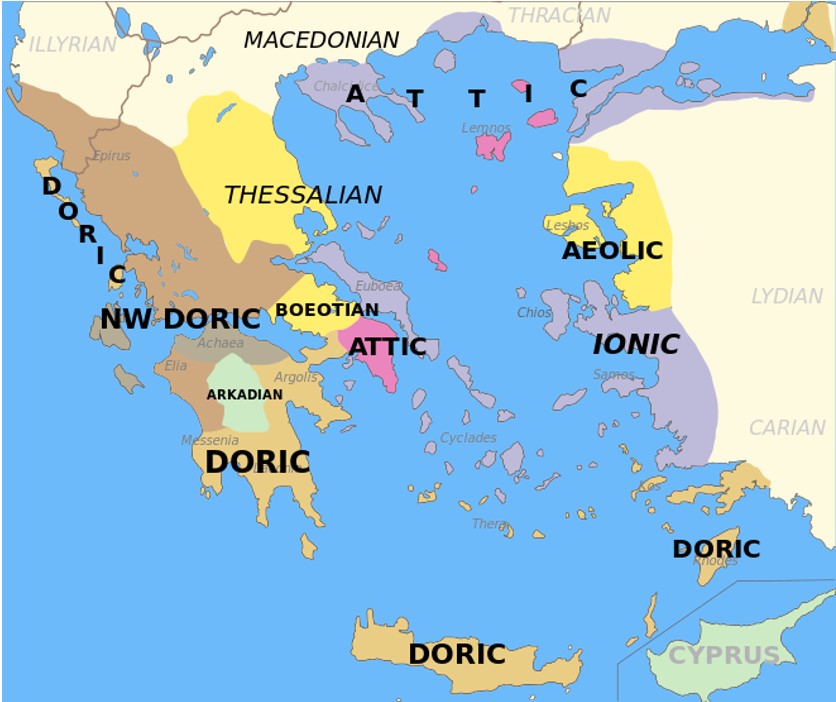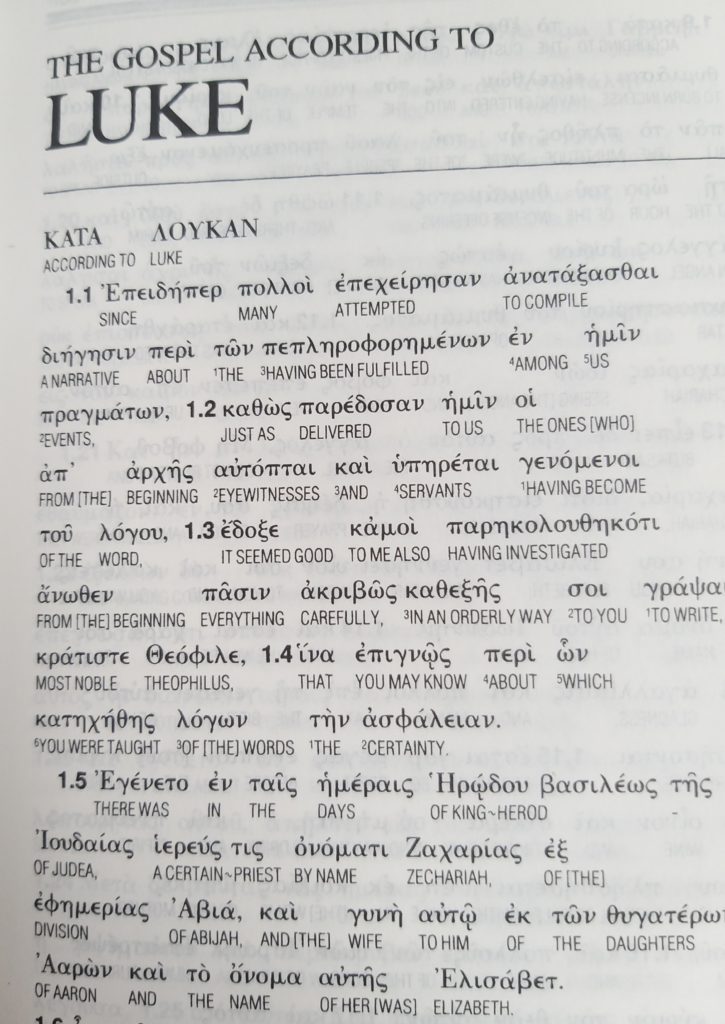In Part 1 of this blog, I discussed the development of ancient Greek as it moved from the Attic form used in literature in the fifth century BC, to the Hellenistic dialect spread by Alexander the Great. This became the Koine, or common dialect, the lingua franca spoken throughout Alexander’s empire. Here, I focus on dialects and the specific differences between Koine and Attic Greek.

The following dialects are known from ancient Greece: Aeolic (spoken in Lesbos, west coast of Asia Minor to the north of Smyrna, north-east Greek mainland); Doric (spoken mostly in north-western Greece); Ionic (spoken on the west coast of Asia Minor), and Attic (spoken in Athens). Homeric Greek is a mixture of the Aeolic and Ionic dialects.
The dialect known as Koine (ἡ κοινὴ διάλεκτος) was the Greek of the New Testament which differs significantly from that of, for example, Plato, Aristophanes or Demosthenes who lived and wrote approximately 500 years previously. New Testament vocabulary contains previously unknown words and these words occur again and again in non-literary texts such as potsherds, papyri and grafitti. These words must have been in widespread use, belonging to the Koine.

During the first centuries AD, the Greek language covered a large proportion of the Mediterranean basin. Spoken over such a large area, there must have been dialectic differences to a certain extent but these need not theoretically have been any greater than in British and American English today. It has been claimed that oral Koine contained elements of Boeotian, Ionic and North-West Greek to a larger extent than Attic, but Attic supplied the orthography of Koine.
Some Characteristics of Koine Greek
- A general simplification of both accidence and syntax.
- Difficulties and irregularities are frequently standardised, for example,
- unusual forms of comparative adjectives are made regular;
- third declension adjectives are rare;
- irregular monosyllabic nouns are replaced;
- verbs in –μι are given the endings of verbs in –ω;
- first aorist endings often replace second aorists;
- middle verbs are often replaced by active verbs with reflexive pronouns;
- the optative is rare;
- the dual number has disappeared.
- There are about 900 words (10% of total vocab) not found in classical authors.
- There are numerous Semitic idioms, e.g., ἐγένετο introducing another verb, traditionally translated “it came to pass”, literally “it happened (that)”. It has been suggested that first century Jews were bilingual in Greek and Aramaic.
- The narrative is uncomplicated and clauses follow one another in a straightforward manner.
Further Reading
Costas, P.S. (1979), An Outline of the History of the Greek Language, with particular emphasis on the Koine and the subsequent periods (Chicago).
Deissmann, A. (1927), Light from the Ancient East, trans. Lionel R.M.Strachan (London).
Are you interested in learning more about Koine or ancient Greek in general? I will have openings for individual and group classes from September. Drop me a line if you wish to be added to the list!
